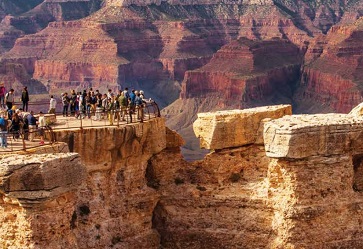The national parks in the United States are a huge magnet for tourists—330 million visitors each year—and the lodging industry benefits greatly from them. That is one of the reasons our industry should be concerned when the national parks are not so nice to visit. The National Parks Conservation Assn. recently released its “Polluted Parks” report. The subtitle: “How America is Failing to Protect Our National Parks, People and Planet from Air Pollution.” Be sure to give the report a read. The report assesses the damage from air pollution by evaluating four categories: unhealthy air, harm to nature, hazy skies and climate change.
 The key finding of the report is that 96 percent of the 417 national parks assessed are plagued by significant air pollution problems in at least one of the four categories. Among other things, it was found that 85 percent of national parks have air that is unhealthy to breathe at times, and nearly 90 percent of parks suffer from haze pollution. At 88 percent of parks, air pollution deposits into soils and waters, damaging sensitive species and habitat. Climate change is a significant concern for 80 percent of the national parks, though all parks are affected at some level.
The key finding of the report is that 96 percent of the 417 national parks assessed are plagued by significant air pollution problems in at least one of the four categories. Among other things, it was found that 85 percent of national parks have air that is unhealthy to breathe at times, and nearly 90 percent of parks suffer from haze pollution. At 88 percent of parks, air pollution deposits into soils and waters, damaging sensitive species and habitat. Climate change is a significant concern for 80 percent of the national parks, though all parks are affected at some level.
How can such places of beauty be impacted so greatly? According to the report, while most air pollution doesn’t originate in national parks, it can travel hundreds of miles from its source, thereby affecting all parks—even remote ones—and distant communities. Much of this pollution begins with extracting fossil fuels, including oil, gas and coal, and burning them in power plants and vehicles. Additionally, industrial-scale agricultural operations harm the air, like in California’s Central Valley communities as well as in Sequoia and Kings Canyon National Parks and César E. Chávez National Monument.
The report cites current rollbacks in regulation by the Trump administration as a key reason for the worsening situation. Climate pollution, or “greenhouse gases,” rose 3.4 percent in 2018, the second-biggest leap in two decades. Enforcement actions against polluters have plummeted by 85 percent.
California is annually cited as having some of the worst polluted cities. It should come as no surprise then that national parks in the area would also suffer. Four of the most polluted national parks include: Sequoia, Joshua Tree, Mojave, Kings Canyon.
The report should serve as a wakeup call for all of us who have a stake in protecting our national parks and their huge economic impact.
Glenn Hasek can be reached at editor@greenlodgingnews.com.






